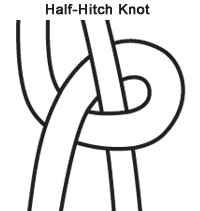Crin de Caballo - Hair of the Horse
There are many fibers used to create textiles, many are
common, many are not. The use of
horsehair has a long history. Probably
the upholstery “stuffing” of your grandmother’s sofa was horsehair, now
replaced with modern synthetics.
Central Asians first domesticated horses around
3,000BCE. The Moors brought horses to
Spain and the Spanish brought horses to the new world.
In the western United States horsehair was, and still is, used in making
tack (bridles, halters ) as well as
accessories such as hat bands, belts and keychains. These can be found in many shops throughout the southwest,
selling local products.
 The method of construction is termed hitching, which takes half-hitch
knots, using sets of plied horsehair, called “pulls”. Since mane hair is generally too short and too soft, tail hair is
used. Pulls can also be braided, but
braiding does not produce a silky, durable product, although braiding is
definitely easier and quicker.
The method of construction is termed hitching, which takes half-hitch
knots, using sets of plied horsehair, called “pulls”. Since mane hair is generally too short and too soft, tail hair is
used. Pulls can also be braided, but
braiding does not produce a silky, durable product, although braiding is
definitely easier and quicker.
South Americans have long used crin to create textiles, including
beautiful mosaic designed carpets, using weaving techniques (usually flat woven
techniques such as Soumak). Crin offers good wear due to its strength,
has nice tactile texture and accepts dyes
In a recent showcase of Chilean
handcrafts were many examples of fine crin-work made into fanciful accessories.
Hair can be purchased cleaned, in bundles from firms overseas, usually in black or white. Imported horsehair is, most often, used in making bows for violins and various stringed instruments. Musical instrument dealers who rehair bows are another source but natural horsehair should be ordered, not synthetic. Also check the internet for US suppliers who sell hanks of hair in various lengths and colors, usually by the pound ( a pound would make a lot of keychains!!)




No comments:
Post a Comment